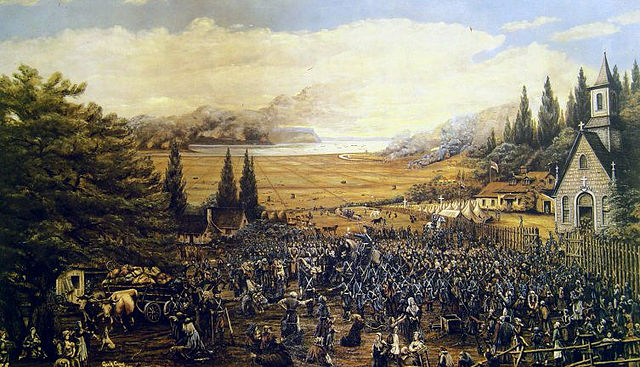History of monarchy in Canada
The history of monarchy in Canada stretches from pre-colonial times through to the present day. The date monarchy was established in Canada varies; some sources say it was when the French colony of New France was founded in the name of King Francis I in 1534, while others state it was in 1497, when John Cabot made landfall in what is thought to be modern day Newfoundland or Nova Scotia, making a claim in the name of King Henry VII. Europeans in the 16th and 17th centuries often considered the territories belonging to different aboriginal groups to be kingdoms. Nevertheless, the present Canadian monarchy can trace itself back to the Anglo-Saxon period and ultimately to the kings of the Angles and the early Scottish kings; monarchs reigning over Canada have included those of France, those of the United Kingdom, and those of Canada. Canadian historian Father Jacques Monet said of Canada's Crown, "[it is] one of an approximate half-dozen that have survived through uninterrupted inheritance from beginnings that are older than our Canadian institution itself."

Samuel de Champlain, who was later named as New France's viceregal representative, directing the construction for Quebec City, 1609
Portraits of the Four Mohawk Kings, painted during their visit with Queen Anne in 1710
Acadians being deported from Grand-Pré
Loyalist refugees on their way to the Canadas during the American Revolution
United Empire Loyalist is an honorific title which was first given by the 1st Lord Dorchester, the Governor of Quebec and Governor General of the Canadas, to American Loyalists who resettled in British North America during or after the American Revolution. At that time, the demonym Canadian or Canadien was used to refer to the indigenous First Nations groups and the descendants of New France settlers inhabiting the Province of Quebec.
Reception of the American Loyalists by Great Britain in the Year 1783. The engraving depicts Loyalists seeking aid from Britannia following their expulsion from the United States.
Depiction of Loyalist refugees on their way to the Canadas during the American Revolution.
The Coming of the Loyalists by Henry Sandham, showing a romanticised view of the Loyalists' arrival in New Brunswick.
The Act Against Slavery, 1793, an anti-slavery act passed in Upper Canada. The Act was created partially in response to Loyalist refugees who brought slaves with them.







